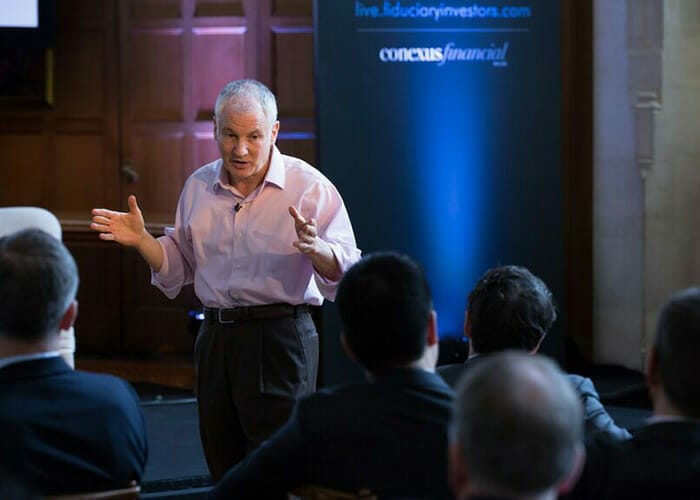Every year for around 15 years, I would give a lecture called the Sputnik Moment, arguing that the US stood on the threshold of another national mobilisation in response to a foreign power. Sputnik means satellite in Russian and back in 1957, the Soviet Union launched the first artificial satellite into space, shocking the US government and public. A panic about the scientifically advancing Soviets helped spur massive US investment in scientific research, infrastructure, educational programs for intensive study of the world’s regions, existing or new alliances, and more, all of which appreciably raised America’s competitiveness.
Even America’s 1979 abrogation of diplomatic recognition of Taiwan for formal recognition of the People’s Republic of China in Beijing was, partly, an eventual outgrowth of that stimulus-response.
Throughout the 2000s, I had been expecting an analogous event – say, the engineering marvel and in-your-face audacity of erecting an archipelago of military bases on coral reefs in the South China Sea – to galvanize the US government and public once more. But the launch of an all-out national drive to compete more vigorously with an advancing China never happened and, having been wrong for so long, I finally abandoned my lecture. Not long thereafter, Donald Trump announced a campaign for the US presidency – and to near universal shock, including his own, he won.
Strange to say, but might Trump be that new Sputnik Moment?
In December 2016, for the first time since 1979, a US president elect took a congratulatory call from the president of Taiwan. True, following his inauguration, Trump quickly folded to the pressure from Beijing to reaffirm Washington’s One-China policy, which designates Taiwan as a province of mainland China despite the island’s de facto independence. Still, Trump went on to impose sweeping tariffs that helped consolidate a fundamental shift in the American public’s awareness of the formidable challenge presented by China’s success.
A broad consensus in the US has coalesced around an imperative to confront China over its subsidies for domestic industries to sell into the open American market combined with its restrictions on market access for foreign competitors, and its forced technology transfer and industrial espionage. A 2017 commission headed by retired Admiral Dennis Blair and former US ambassador to China Jon Huntsman estimated yearly losses to the US economy just from Chinese intellectual property theft at between $225 billion and $600 billion. Even much of America’s business sector, long bullish on close relations with China, has come to accept that the latter poses an economic, technological, and geopolitical threat to the United States.
Thanks to Trump’s extreme unorthodoxy, heady turnabouts in diplomacy and trade are possible. Unfortunately, in China policy, too, we mostly see a dire lack of competence or coherence. Trump could squander the opportunity he himself created to rebalance America’s economic relationship with China.
More fundamentally, even if by some miracle his administration proves capable of mounting a combination of meaningful deterrence and sustained diplomacy, along with allies, to move the US-China relationship to a mutually better place, it would be only one step. To retain its position as the world’s innovation leader, the US must outcompete China. That requires employing points of leverage to get China to play by international rules that it has voluntarily signed onto. But beyond attaining vital reciprocity, competing better necessitates huge investments in America’s atrophying advantages: human capital, infrastructure, an open (non-monopolistic) economic landscape, and good governance.
Sounding the alarm about a predatory but capable rival is merely the start of what could be a Sputnik Moment. An ambitious domestic reinvigoration must follow, too little of which is in evidence. For that, China cannot be blamed.
And what of Beijing?
Washington’s sudden discovery that it has a spine caught out China’s self-appointed rulers. After all, which foreign capital had voluntarily rescinded diplomatic relations with Taiwan and recognised the PRC? Which government had granted Communist China, then a resoundingly non-market economy, most favoured nation status in trade already in 1980? Who had facilitated Western technology transfer for backward China, eager to help accelerate its modernisation? Who had forgiven the 1989 Tiananmen massacre in a relatively brief time? Whose presidents had brought planeloads of Fortune 500 corporate executives on state visits to China? Who had lobbied vociferously for China’s 2001 accession to the WTO, despite the country falling well short of the necessary conditions? Who, over the next decade and a half, despite gathering frustrations, had continued to try to deepen economic relations with China?
The US had done all that, and more – until, abruptly, it declared a “trade war,” accompanied by aggrieved demands that China fundamentally alter its longstanding state-controlled system.
In truth, the signs of some version of the Trumpian confrontation has been coming. The annual renewals of China’s MFN status were often subjected to strong protests in the US Congress, and President George H.W. Bush twice vetoed bills that would have tied the renewals to improvements in China’s human rights record. President Barack Obama’s “pivot to Asia” proved largely stillborn, but American complaints about China’s behaviour grew louder.
Nonetheless, if rumours are to be given credence, President Xi Jinping supposedly became the target of whispered internal criticism for mishandling China’s most important bilateral relationship, failing to heed President Trump’s threats and the stronger US shift they heralded. Sadly, we have no idea if those rumors are based in fact, because China’s governance structure remains utterly opaque. No country has ever had an economy this immense with a political system this closed. Xi’s coronation in 2018 as de facto lifetime ruler, with repeal of the constitution’s two-term limit on the presidency, has only deepened the governance mystery.
Here is what is not mysterious, though: No Communist regime that has undertaken far-reaching political liberalisation has survived.
To be sure, such regimes can open up their economies, permitting significant marketisation, but once they open up politically, one-party monopolies experience the equivalent of a political bank run. There is no reform steady state. Instead there is only a process, once begun, of unintentional auto-liquidation. That is the story of Hungary in 1956, Czechoslovakia in 1968, and the Soviet Union after 1985.
Americans’ wishful thinking – that authoritarian China would eventually be compelled to liberalise politically, in order to continue its economic rise and push through the middle-income trap – never took this history seriously. By contrast, Xi and Chinese Communist ruling circles have relentlessly studied the unnerving history of Communist reform efforts, and remarked on them, alarmingly, in public.
Xi forced his move to personal rule partly because, under his lame duck second-term predecessors, interest group infighting and metastasising corruption had both stymied and corroded the system. But he also did so to preempt any true-believing reform Communist emerging to take down the system unwittingly, along the lines of a Mikhail Gorbachev.
For years, the Chinese regime has been announcing a pending further economic liberalisation. Instead, it has been squeezing the private sector. Who except observers in denial about the Communist nature of the survival conscious regime in China could exhibit surprise? The accumulation of private capital affords entrepreneurs an independent source of power. Xi has also been expending enormous resources to re-entrench the party in economic and social life to suppress foreign ideas and hints of political alternatives, and even to try to revive the ideology.
All this suggests that the policy range in which Xi operates is narrower than often supposed – effectively, a loop between market openings and market strangulations. One-party rule trumps all, even the imperative for economic expansion.
Where does that leave U.S.-China?
None of the above takes proper account of the geopolitical tensions, but that is a subject for another day. (The four-decade diplomatic fudge over Taiwan’s limbo status might have reached its sell-by-date.) As for trade, a deal, of sorts, remains possible. But what Washington is demanding, albeit inconsistently – genuine structural reform to afford preference to the private sector over state-owned enterprises and creation of a level playing field in China for foreign multinationals – is simply not very compatible with the long-term preservation of the Communist-party monopoly.
China’s Communist system seems incapable of outlasting either a deep push to expand the private sector or the absence of such a push. Consider the circumstance that, at long last, the country is turning from an exporter to an importer of capital, which requires that it attract significant foreign capital. But can that be done without deeply liberalising the financial sector? As the regime understands full well, the freer flow of capital across the border, in both directions, has implications for the party’s monopoly.
That said, China is not going away, and the US, having emerged from one delusion about China’s trajectory of “inevitable” political opening, risks engaging in another, about China’s alleged pending crash. GDP in China has become an output, rather than a measure, and officials have gone from manipulating economic statistics to disappearing some, but Chinese companies are No. 1 and 3 globally in the manufacture of drones. The private sector, under duress, remains enormous. And massive concentrated state investment by the state-directed banking system, much of it wasted, into big projects where scale offers advantage can produce breakthroughs, including in advanced technology.
In the end, although China has a Communist regime, it also has an astonishingly dynamic society. Were the Communist regime to collapse, the country would still present an existential challenge to the US.
A report issued by Marco Rubio, chairmanof the US Senate Committee on Small Business and Entrepreneurship, warns that AI in China has been undergoing a quantum leap. “This report’s central conclusion,” it notes – in perhaps the surest sign of an incipient Sputnik Moment vis-à-vis China – “is that the U.S. cannot escape or avoid decisions about industrial policy.” Not long ago, Republicans such as Rubio condemned that idea (government intervention to support priority sectors) as a treacherous step on the slippery slope toward… Communism.
Stephen Kotkin is the John P. Birkelund Professor in History and International Affairs at Princeton University. He is also a fellow at the Hoover Institution at Stanford University. He directs Princeton’s Institute for International and Regional Studies and co-directs its program in the history and practice of diplomacy. Kotkin was a Pulitzer Prize winner for Stalin: Paradoxes of Power, 1878-1928.
Kotkin will speak at the Fiduciary Investors Symposium at Cambridge University from April 7-9. For more information on the event click here.




